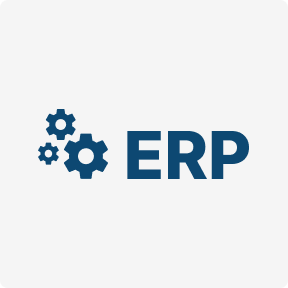Rapid Application Development Model RAD Model
Rapid construction is where application coding, system testing, and unit integration occurs, converting prototype and beta systems into a working model. This phase may also be repeated as required, supporting new components and alterations. Generally, teams use low-code or rapid application development tools to quickly progress the application. The RAD methodology was introduced in the early 1990s as an alternative to the waterfall software development model.
The history of rapid application development (RAD) goes back to the 1970s and ’80s, when the plan-driven waterfall framework was quite popular. However, software development was a radical change for the industry in that era. RAD is a development model that prioritizes rapid prototyping and quick feedback over long drawn-out development and testing cycles.
The Future of RAD
It is especially suited for software products requiring UI, UX, short release time, low budget, and fast speed. RAD is especially well suited for (although not limited to) developing software that is driven by user interface requirements. Graphical user interface builders are often called rapid application development tools. Other approaches to rapid development include the adaptive, agile, spiral, and unified models. RAD has a high dependency on modelling skills and requires experience with rapid adaptation based on component evolution. A technically strong team is essential to adequately identify and deliver business requirements.
RAD emphasizes the concept of constructive feedback without following strict and procedural templates. In the end, Centric Consulting not only met the demands of their client but was also able to meet their needs and grow its business.
Why should I consider using RAD tools for my software development projects?
But in Agile, progress is achieved by delivering a high-quality product at the time of delivery. A timeline of 2–3 months is ideal for RAD, and most importantly, the technical risk should be low. It is particularly suitable for web-based applications because prototypes can be delivered as soon as they are available for continuous feedback and optimization.
Kissflow, for instance, uses RAD methodology for its no-code development for citizen developers. RAD methodology is difficult to implement with multiple teams and a large number of developers. Agile development is designed to take advantage of a lot of developers on a single project. However, there has been some recent confusion over how rapid application development methodology differs from Agile development methodologies. The process involves building a rapid prototype, delivering it to the customer, and taking feedback. After validation by the customer, the SRS document is developed and the design is finalized.
Rapid Application Development Advantages and Disadvantages
This rapid pace is made possible by the methodology focusing on minimising the planning stage and thus maximising the potential in the prototype development. The Rapid Application Development method was designed as a direct response to the then-dominant waterfall approach to software development. The waterfall methodology was built on planning and sequential design processes. The RAD concept was officially introduced to the public in 1991 with the book Rapid Application Development by James Martin. RAD Model or Rapid Application Development model is a software development process based on prototyping without any specific planning. In RAD model, there is less attention paid to the planning and more priority is given to the development tasks.
- The need for rapid application development has seen the emergence of a plethora of low code and no code platforms.
- In modern Information Technology environments, many systems are now built using some degree of Rapid Application Development[8] (not necessarily the James Martin approach).
- RAD helps you identify early risk factors around effort, cost, complaints, etc.
- In the end, Centric Consulting not only met the demands of their client but was also able to meet their needs and grow its business.
- With visual interface tools and pre-built modules, RAD helps create software apps quickly and easily.
- RAD projects are typically completed in shorter time frames than traditional waterfall development projects and often utilize iterative and incremental development techniques.
Stakeholders communicate and learn through experience, quickly and easily identifying what does and doesn’t work. The rapid nature of releases means errors are far more likely to be discovered earlier, which leads to a reduction in errors and debugging. Traditional software development methods, like waterfall, follow rigid process models that put pressure on customers to sign off on requirements before a project starts. Customers often don’t see a working build for several months, which complicates the change process for new requirements and feasibility adjustments.
The various phases of RAD are as follows:
If you don’t have the right skills and competencies at your disposal, you might be better off with a more straightforward framework. In this section, we will explore some of the disadvantages of RAD and how they can impact the development process. By understanding these potential challenges, you can make informed decisions about whether RAD is the right approach for your organization’s software development needs. These practitioners, and those like them, helped RAD gain popularity as an alternative to traditional systems project life cycle approaches. Throughout the development process, the customer was able to provide input as to what functionalities were required.
However, scalability is an essential aspect of product-led growth development, and methodologies such as SAFe, agile, Extreme Programming, lean practices, etc., are generally a better fit than RAD for large projects. The agile and incremental approach removes failures such as big-budget waterfall products. Prototyping supports killing bad ideas before they are built, and this radical approach saves the company’s cost, time, and effort. Kissflow is an example of the next generation of rapid application development. Kissflow’s rapid application development platform is a no-code work platform that lets anyone develop their own automated process in a matter of minutes instead of days or weeks.
Increased Speed and Agility
An efficient strategy offers the companies with a head start in planning and an edge over the competitors. The study also includes a market analysis that employs a variety of analytical approaches, such as Porter’s Five Forces Analysis, SWOT Analysis, and PESTEL Analysis. In addition, Kissflow’s platform allows users to automate business processes using RAD principles, enabling the creation of automated apps at a rapid pace, with no coding required in some cases. To use an analogy, the Rapid Application Development methodology is a 100-meter sprint, while Agile development is more of a marathon. Agile focuses on sustained and continuous progress over an extended period of time. Rapid application development is well-suited for small and medium-sized projects where the application is intended to be delivered incrementally.
Skilled team members can quickly produce prototypes and working code that may otherwise take weeks or months. Frequent iterations encourage breaks projects into smaller, manageable tasks, assigned to team members based on specialty and experience. Businesses get a working product delivered in a shorter time frame, and can benefit from early availability while new functionality rapid application development (rad) continues to be released. Rapid application development alleviates the complications found in traditional software development methods, focusing on customer satisfaction through early and continuous delivery of valuable, working software. All stakeholders communicate frequently and in real time to measure progress, solve problems, and improve efficiency.
Detailed TOC of Global Rapid Application Development (RAD) Software Market Research Report 2023
There are also tools for collecting data, designing personal workflows, and setting up unique rules for each new application. In the workflow management and business process management suite space, few alternatives do it as well as Kissflow does. To begin with, this model makes it easier for you to break down a single project into smaller tasks. Since RAD is based on task orientation, project managers can increase efficiency by assigning tasks to members who are most suited to them. Key players in the Rapid Application Development (RAD) Software market are powerful corporations that have a big impact on the direction of the sector and its expansion. These players frequently pioneer new product innovations, industry trends, and technological improvements.



No Comments